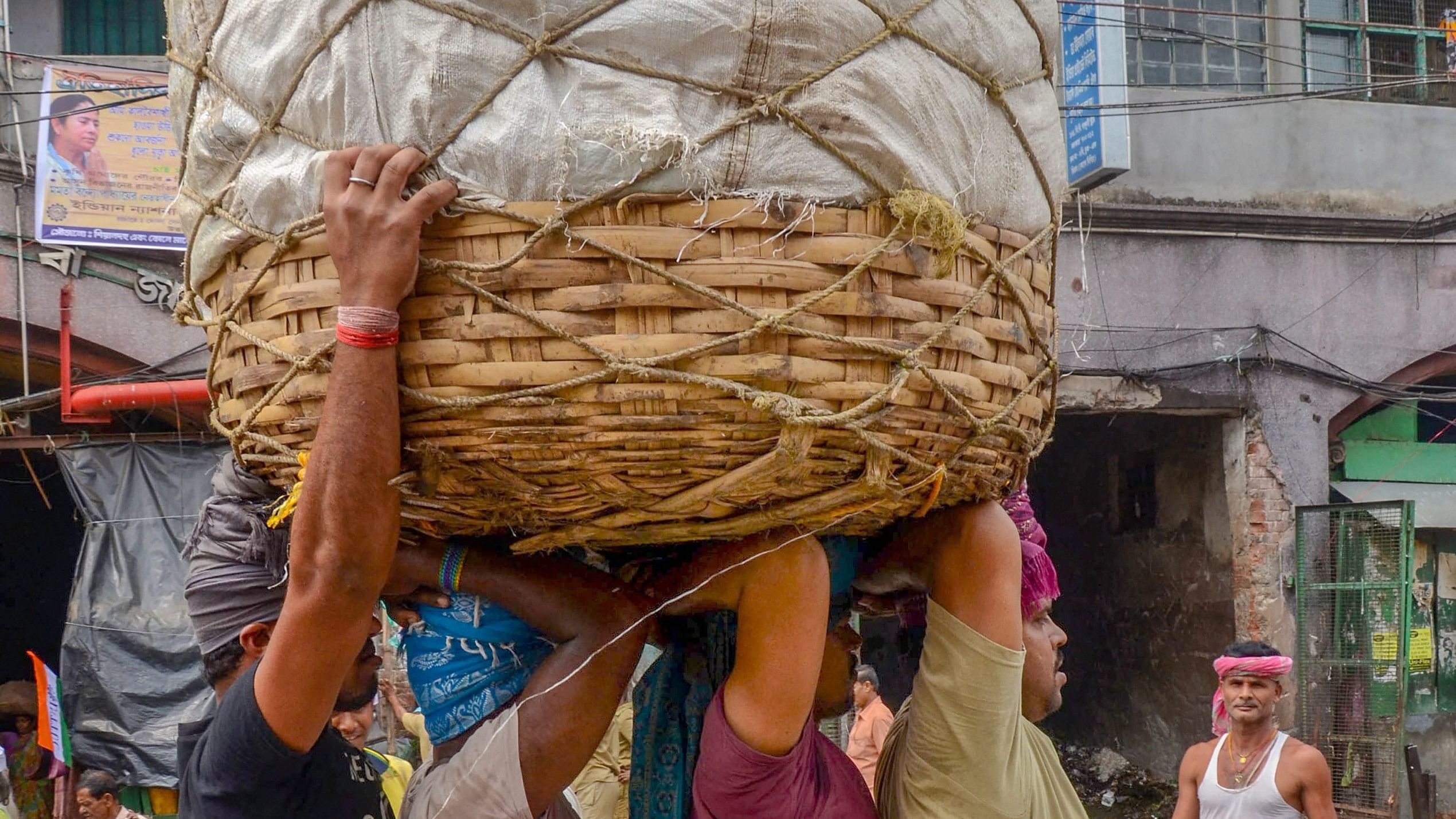
Workers carry a basket on their heads at a wholesale market, in Kolkata. Representative image
Credit: PTI File Photo
New Delhi: The Indian economy must grow at a rate of 8-10% per annum over the next decade to reap its demographic dividend, the Reserve Bank of India said in its monthly bulletin on Tuesday.
“In order to achieve its developmental aspirations over the next three decades, the Indian economy must grow at a rate of 8-10% per annum over the next decade to reap the demographic dividend that started accruing from 2018 and, as calculations show, will last till 2055,” the RBI noted in the report.
Earlier this month, the RBI’s monetary policy committee pegged the current financial year (FY25) growth at 7%. As per the official data, the country’s gross domestic product (GDP) is estimated to have grown by 7.6% in FY24.
In the past 10 years, the average annual real GDP growth in India is less than 6%. One of the key poll pitches of the ruling BJP is to make India a developed economy by 2047.
The economic growth in the post-pandemic years has been above 7%. “So far, capital deepening is powering the step-up in the growth trajectory, led by sustained public investment, and supported by productivity improvements,” the RBI said.
The RBI also said that for India to harness its favourable demographics and achieve the escape velocity required to breach the low middle income barrier, the “developmental strategy over the next few decades must centre around extracting the maximum possible contribution of its young and rising labour force to the growth of gross value added (GVA)."
India’s working age population is projected to expand at the rate of about 9.7 million per year during 2021-31 and 4.2 million per annum during 2031-41. “The cutting edge of the growth strategy will be provided by a focus on labour quality,” the RBI’s report noted.
On price rise, the RBI noted that extreme weather along with prolonged geopolitical tensions pose a risk to inflation. “The impact of food shock on core inflation has reduced over time while that of fuel shock has increased recently,” the RBI said.
India’s annual retail inflation based on the Consumer Price Index (CPI) eased to 4.9% in March after averaging 5.1% in the preceding two months and a high of 5.7% in December 2023.
“Food inflation, despite some signs of moderation, remains elevated and a potential source of risk to the disinflation trajectory,” the RBI said. In order to control inflation, the RBI sharply increased policy repo rate during 2022 and has kept it unchanged since February 2023.